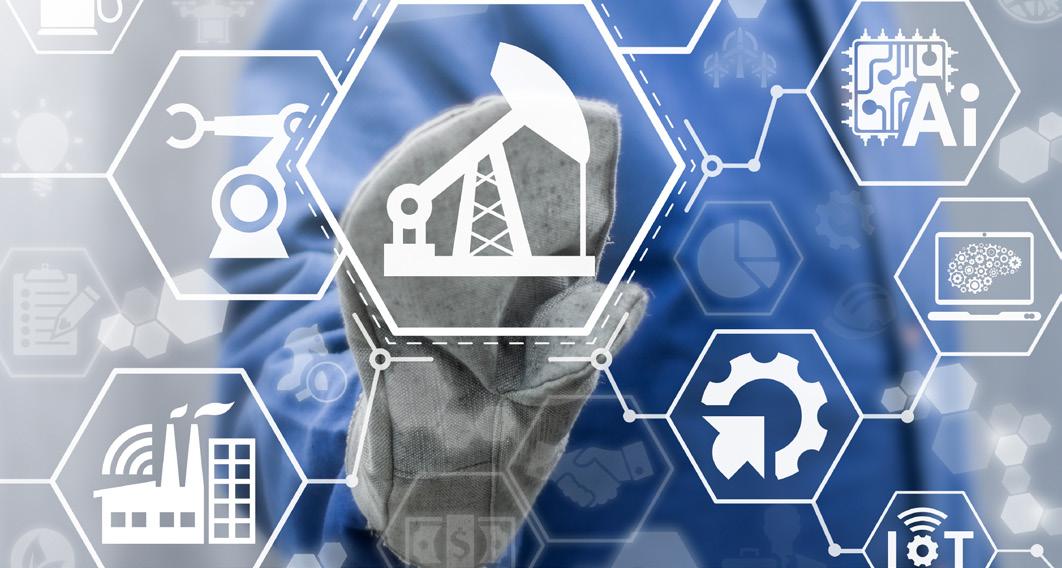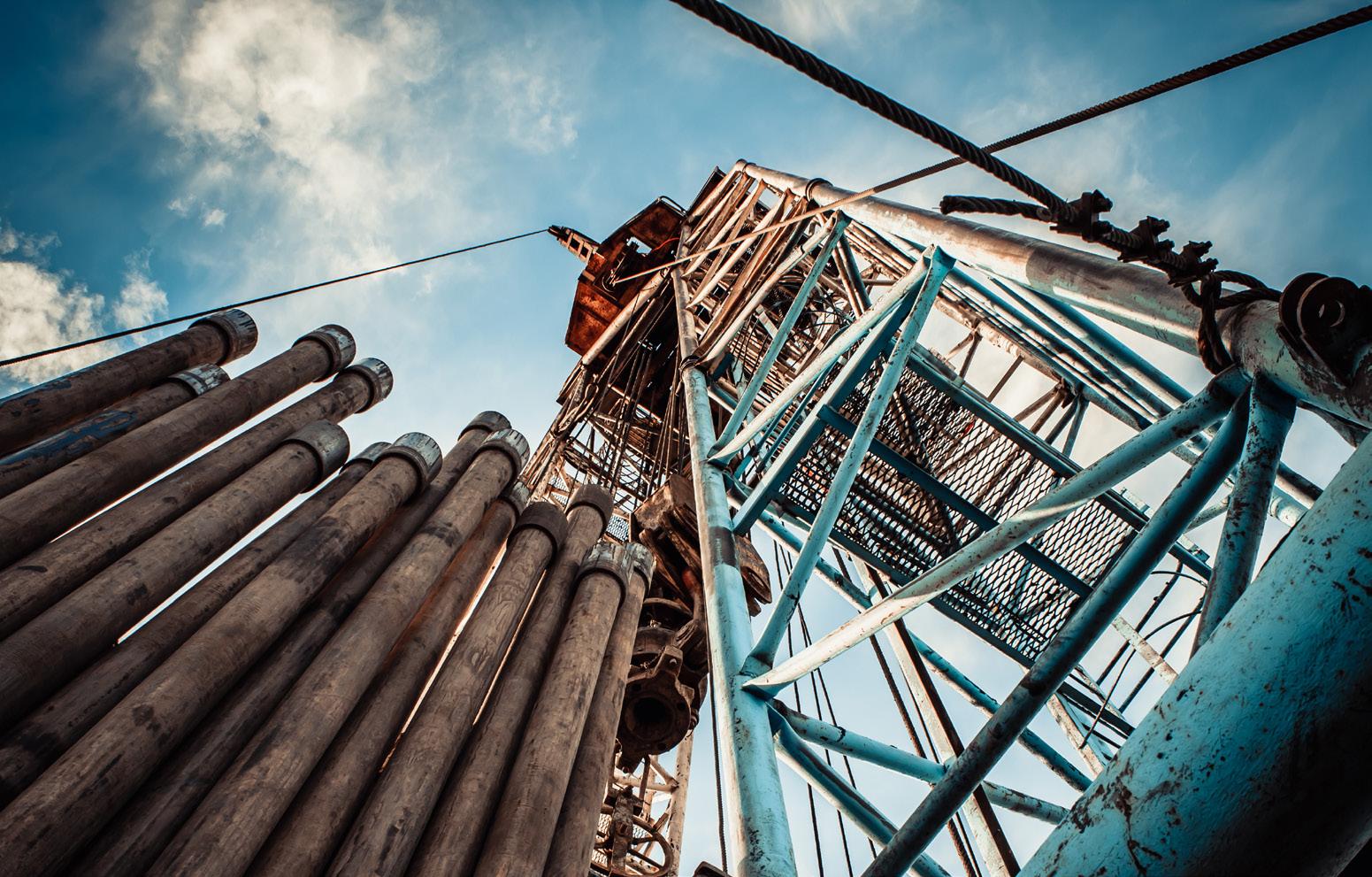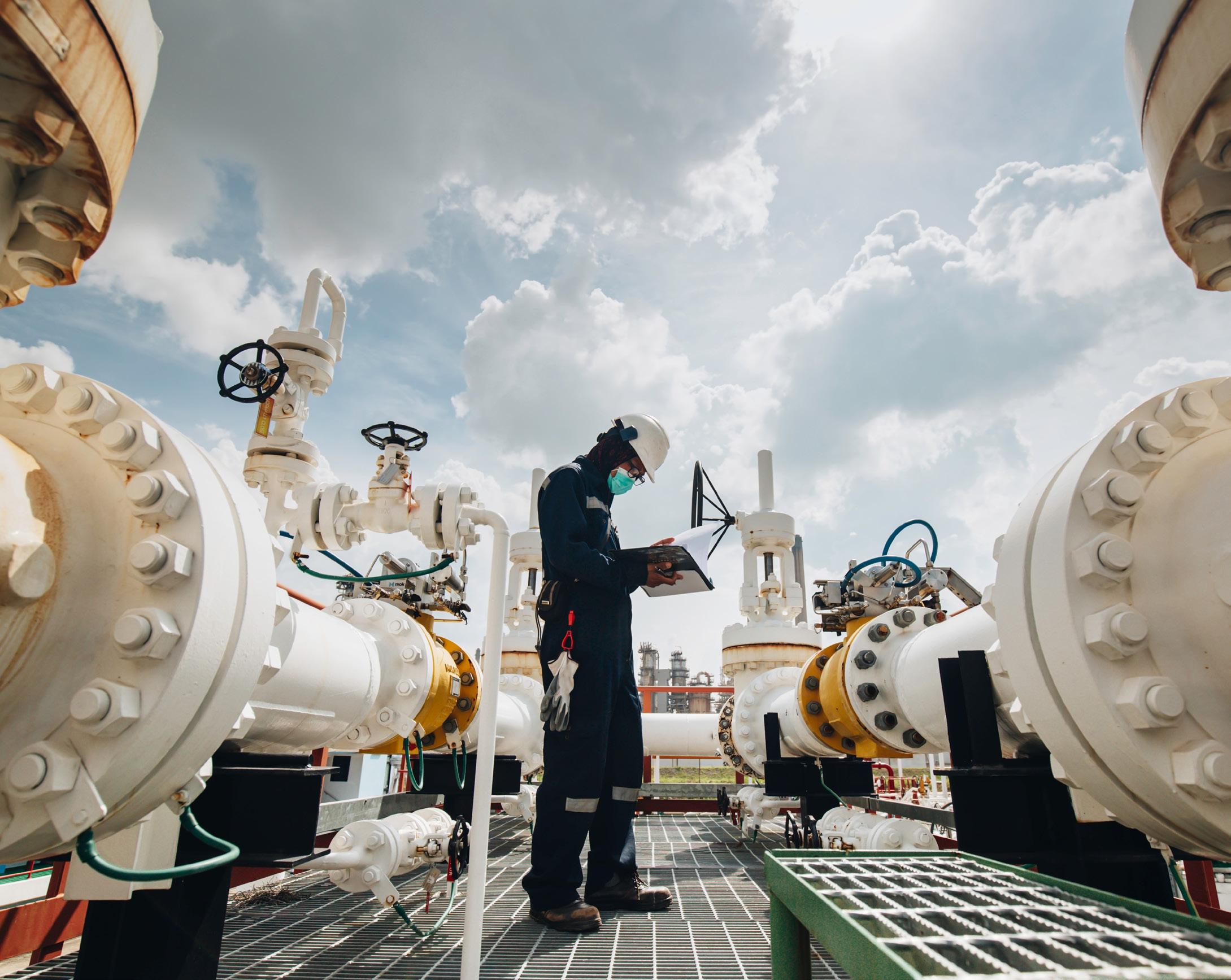
3 minute read
The Rise of AI and Big Data
At look at how Aramco are harnessing power of AI, Big Data, and the Industrial Internet of Things (IIoT), which is any system of interrelated computing devices that are connected digitally to enhance industrial processes, to optimize many aspects of its operations, from reservoir management to power consumption, and to achieve a variety of goals, from improving workers’ safety to reducing CO2 emissions.
The rapid expansion of AI benefits owes much to Big Data, which encompasses the creation and capture of vast datasets containing diverse information produced at remarkable speeds. Through processing and analysing these datasets, AI algorithms are now instrumental in tackling complex problems. When combined, AI and Big Data offer an extensive array of potential applications. In manufacturing, AI optimizes product design, inventory management, and logistics, while online platforms leverage it for virtual assistants, advertising, language translation, and cybersecurity. On the roads, AI algorithms power Sat-Nav systems and regulate traffic flow to minimize congestion. Across various aspects of modern life, AI drives cost reduction, time efficiency, and operational optimization.
At Aramco, AI stands as a cornerstone of our Digital Transformation initiative, where we continuously innovate smart tools and digital solutions to enhance decision-making processes and elevate business performance. Leveraging the synergies of

AI and Big Data, we are committed to maintaining our leadership position in meeting the world’s escalating demand for reliable, affordable, and environmentally conscious energy solutions.
How Aramco use AI and Big Data
Utilizing AI and Big Data solutions can enhance diverse operations in the energy sector, fostering heightened efficiency, reliability, and sustainability. Aramco has committed to positioning itself as a premier digitalized energy enterprise, recognizing the pivotal role of industrial AI in realizing this objective. Presented below are five instances illustrating how Aramco harnesses the potential of these sophisticated digital technologies in practical applications.
Flare monitoring
Flaring occurs when hydrocarbon gases are released and combusted due to pressure buildup in pipelines and processing facilities. Aramco utilises Big Data to provide engineers with a comprehensive visualisation of the entire gas processing system, enabling swift identification of flaring sources and the generation of potential solutions. With access to 18,000 data sources for monitoring and forecasting flaring, Aramco compares real-time data with models constructed using diverse Big Data processing techniques. This allows their in-house-developed AI systems to anticipate when a facility might exceed flaring targets, enabling pre-emptive remedial measures. The integration of Big Data and AI has been instrumental in Aramco achieving over a 50% reduction in flaring since 2010, maintaining a flare volume of below 1% of total raw gas production for the past decade, thus establishing industry-leading standards.

Reservoir modelling
Reservoir simulation uses state-of-the-art digital visualization tools to model our reservoirs, and their management challenges, and thereby guide decisionmaking to achieve optimal development plans. For example, TeraPOWERS, which is Aramco’s reservoir and basin simulator, utilises Big Data to simulate the entire hydrocarbon system of the Arabian Peninsula, using models that are continually updated with new drilling and production data. Sophisticated algorithms then analyse this data to maximize our access to these hydrocarbon resources.
Camera-Based Well Space Out system
This innovative project utilises a platform connected to the Industrial Internet of Things (IIoT) to automatically space out the drillstring assembly, which is an important component used to make the drill bit turn at the bottom of a wellbore. The platform consists of smart and waterproof high-resolution wireless cameras, and other sensors, that use AI and machine learning to process and analyse the video and imagery captured. These technologies automate and optimise the placement of the drillstring assembly — a critical step in the process of drilling new hydrocarbon wells, as correct placement allows for easy and fast shutdown in the event of a well control issue caused by unexpected changes in pressure.
Khurais oil field
At Khurais, one of Aramco’s largest oil fields, it has deployed 40,000 sensors to monitor more than 500 oil wells — creating the world’s first Advanced Process Control (APC) for a conventional oil field. Harnessing the latest advances in Big Data analytics, machine learning, smart sensors, and robotics, has delivered several significant benefits at Khurais. These include the development of an in-house AI solution for optimizing fuel gas consumption in boilers; using robotics to make maintenance operations safer, cheaper and more efficient; and deploying a pipeline management system to detect possible leaks using fibre optics as a sensor. These digital solutions have helped to achieve a 15% increase in oil production and a 100% improvement in troubleshooting response times.
Abqaiq plant
Abqaiq, which has been in operation for more than 70 years, is Aramco’s biggest oil processing facility and the largest crude stabilisation plant in the world. The digital transformation of Abqaiq has led to significant operational improvements in three key areas. First, the use of robots and smart drones to perform nearly a third of routine operations has reduced the reliance on manual field checks. Second, the introduction of machine learning and AI algorithms has enabled the automatic adjustment of the oil stabilization process, leading to increased power generation performance and a reduction in CO2 emissions. Third, the expanded use of data, analytics, and predictive modelling, has helped engineers to anticipate potential system failures more effectively.









